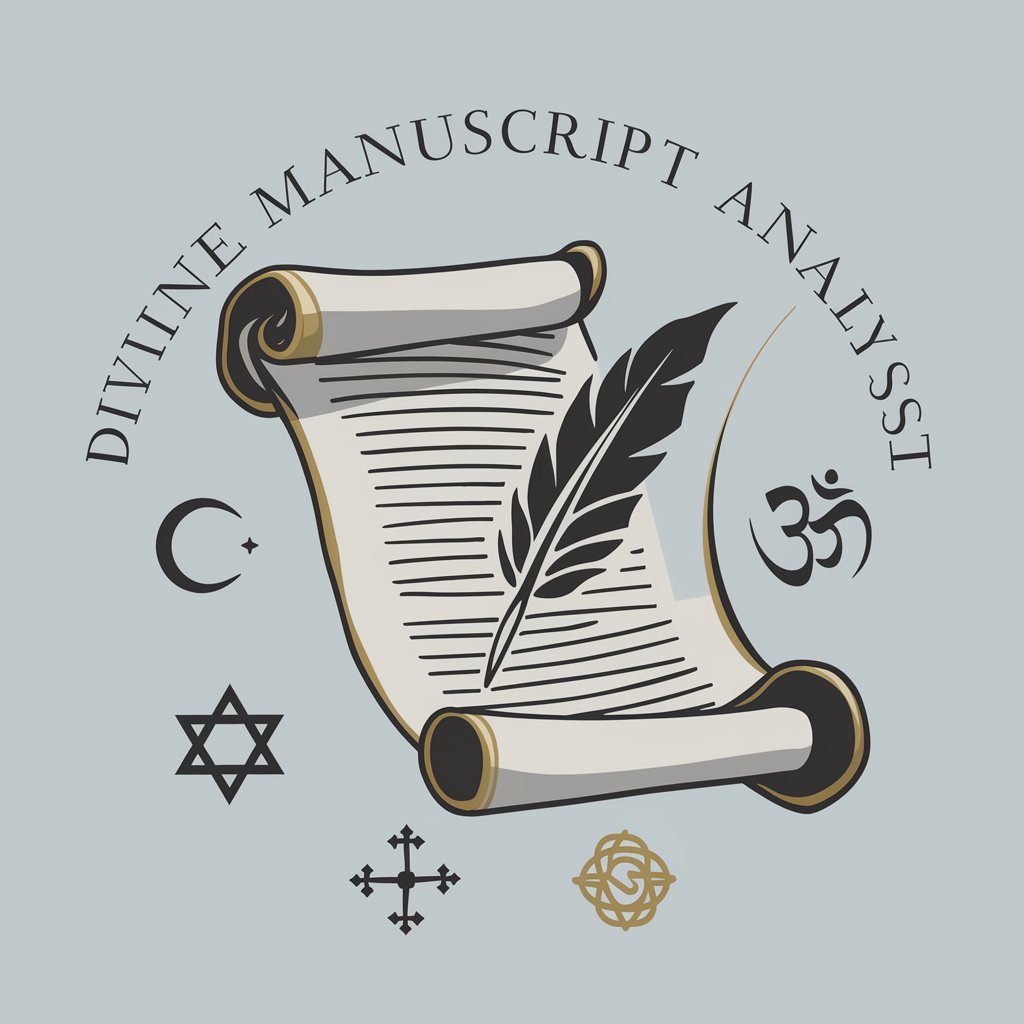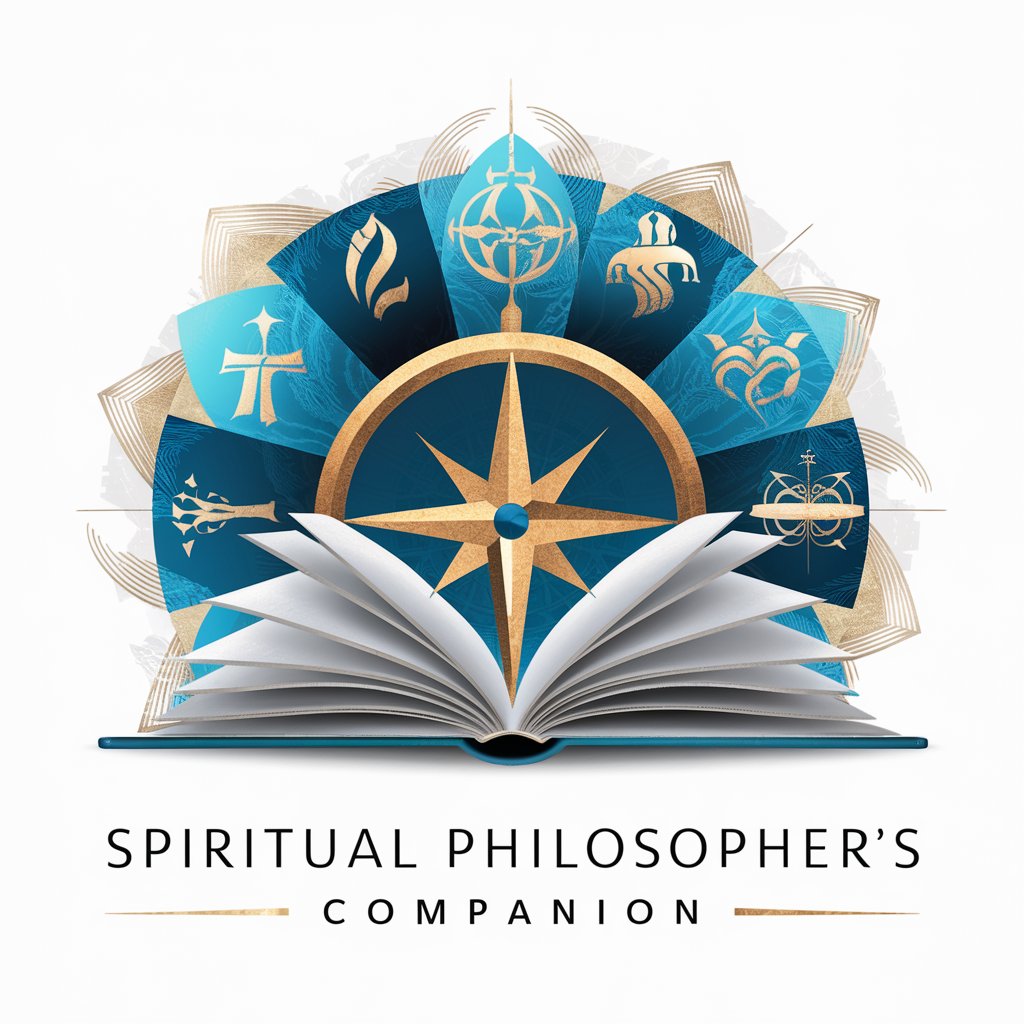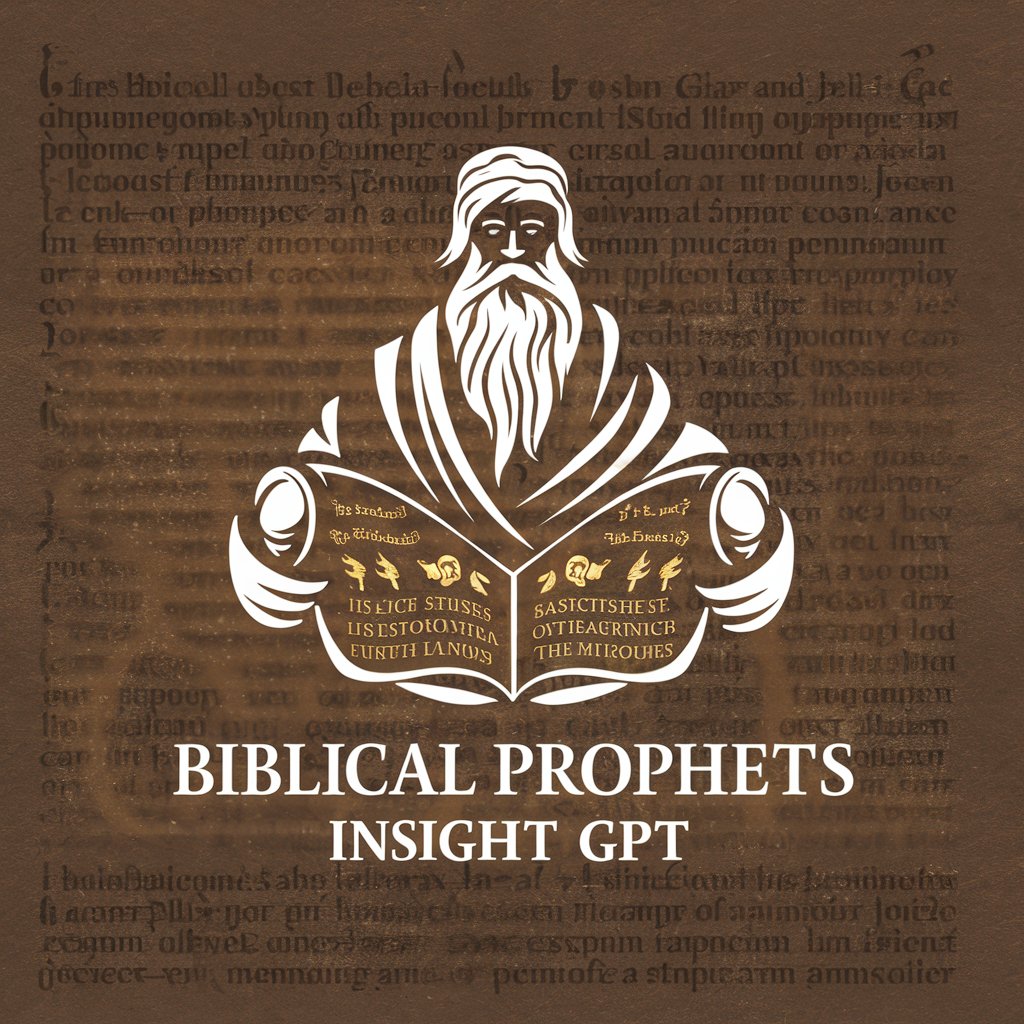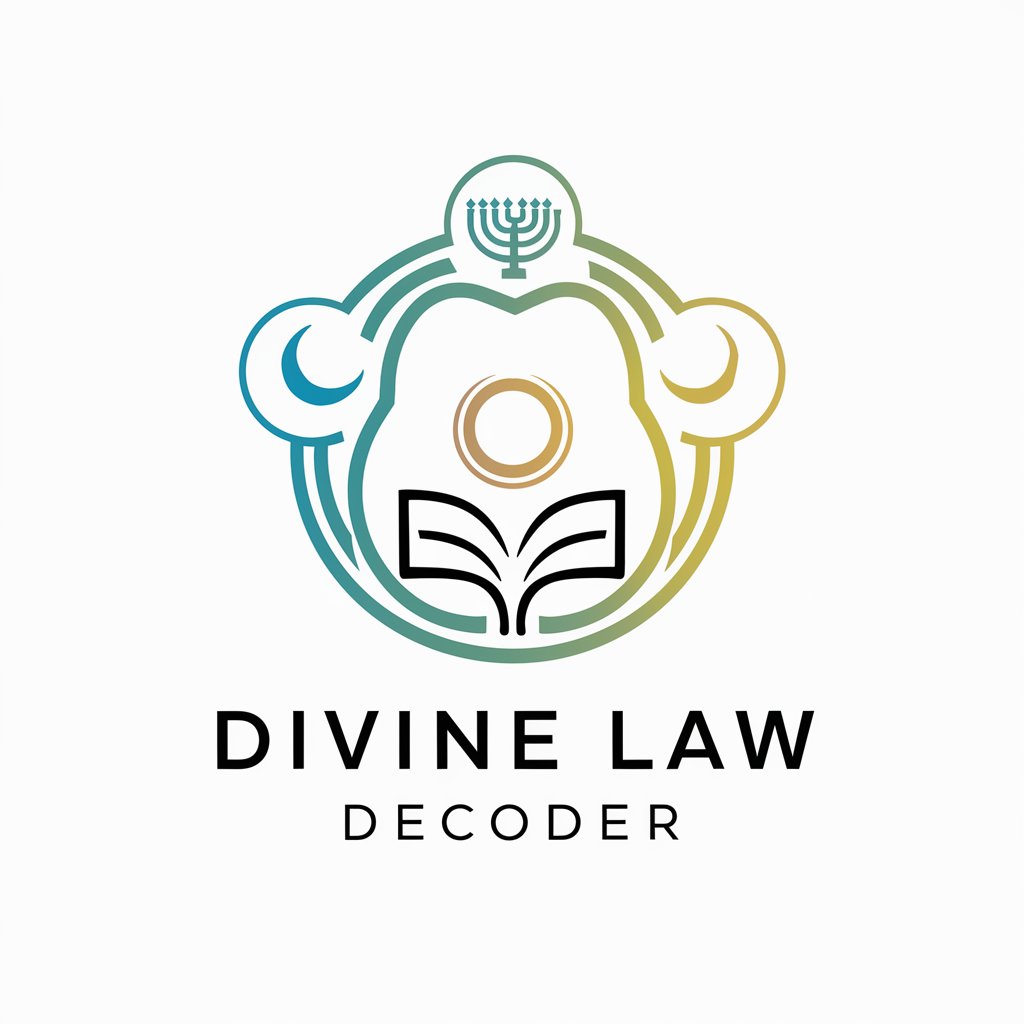
📜 Divine Manuscript Analyst 📖 - Sacred Text Analysis

Welcome! Let's explore the depths of sacred texts together.
Unveiling the Mysteries of Sacred Texts with AI
Can you explain the historical context of this sacred text?
What are the symbolic meanings behind these verses?
How do different interpretations of this passage compare?
Could you provide an analysis of the language used in this text?
Get Embed Code
Understanding the Divine Manuscript Analyst
The Divine Manuscript Analyst is a specialized AI designed to assist users in engaging with and understanding sacred texts across various religious traditions. This tool is built to provide historical context, analyze language and symbolism, and compare different interpretations of these texts. It approaches inquiries with respect and sensitivity towards the diverse beliefs of users, drawing from a wide range of sources, including academic works, religious commentaries, and authorized translations. An example scenario illustrating its function could be a user seeking to understand the symbolism behind the Parables of Jesus in the Christian tradition. The analyst would offer detailed explanations, citing scholarly interpretations, and perhaps comparing these with interpretations from other traditions that have similar storytelling methods. Powered by ChatGPT-4o。

Core Functions of the Divine Manuscript Analyst
Historical Contextualization
Example
Explaining the socio-political climate of Jerusalem during the time of King Solomon's reign.
Scenario
A user studying the Book of Proverbs might want to understand its teachings within the context of the era it was written. The analyst provides insights into the historical background, enhancing the user's comprehension of the text.
Symbolic and Linguistic Analysis
Example
Decoding the symbolism in the Book of Revelation.
Scenario
Given its complex imagery, a user could seek help in deciphering the apocalyptic symbols within the Book of Revelation. The analyst breaks down the imagery, language, and possible interpretations based on scholarly consensus and various theological perspectives.
Comparative Interpretations
Example
Comparing the concept of Dharma in Hinduism with the concept of the Tao in Taoism.
Scenario
A user curious about the commonalities and differences between Eastern philosophies might inquire about these key concepts. The analyst provides a detailed comparison, drawing from sacred texts, commentaries, and scholarly articles.
Ideal Users of the Divine Manuscript Analyst
Academic Researchers
Scholars and students in the fields of theology, religious studies, and history who require in-depth analysis and contextual information on sacred texts for their research, coursework, or personal interest.
Spiritual Seekers
Individuals exploring spiritual paths, seeking deeper understanding of various religious beliefs and practices, or those looking for comparative studies on different religions.
Writers and Content Creators
Authors, bloggers, and journalists who write about religious themes, historical contexts, or cultural analyses and need accurate, comprehensive information on sacred texts.

How to Use Divine Manuscript Analyst
Initiate Free Trial
Start by visiting yeschat.ai for an immediate free trial without the need for login or subscribing to ChatGPT Plus.
Choose Text
Select a sacred text or manuscript you wish to explore or understand better. This could range from ancient scriptures to modern spiritual writings.
Ask Questions
Pose specific questions or request analysis on particular passages, symbols, or concepts within the chosen text for detailed insights.
Review Responses
Analyze the comprehensive responses provided, including historical context, linguistic analysis, and comparative interpretations.
Engage Further
For deeper understanding, follow up with more nuanced questions or request clarifications based on the initial feedback received.
Try other advanced and practical GPTs
🧘♂️Spiritual Philosopher's Companion📚
Illuminating spiritual wisdom with AI

📘✝️ Apologetics Resource Hub 🛡️📚
Empowering faith through AI-powered apologetics.

📜✨ Biblical Prophets Insight GPT 🌟
Unlocking the mysteries of biblical prophecies with AI.

🌱 Comforting Soul Shepherd 🌟
Empathetic AI for Soulful Conversations

Divine Law Decoder
Decoding Divine Laws with AI

🤲 Divine Service Mentor GPT 🛐
Empowering Church Volunteers with AI

📘🎓 Next-Gen Educator's Assistant
Empowering Educators with AI

📚 EduCoach Navigator 🧭
Empowering educators with AI-driven guidance

🤖🎓 Tech-Savvy Classroom Assistant
Empowering Educators with AI

📚✨ Student Engagement Analyzer GPT
Empowering Education with AI Insights

🏞️ Ultimate Field Trip Guide 🚌
AI-powered Educational Trip Planning

📘✨ Teacher's Wellness Mentor GPT
Empowering Teachers with AI-Driven Wellness

Frequently Asked Questions about Divine Manuscript Analyst
What types of texts can Divine Manuscript Analyst analyze?
It can analyze a wide range of sacred texts from various religious traditions, including ancient scriptures, spiritual writings, and modern religious documents.
How does Divine Manuscript Analyst handle different interpretations of the same passage?
It provides a balanced view by presenting various interpretations from different religious perspectives and scholarly works, encouraging users to explore these viewpoints critically.
Can it help with academic research on religious texts?
Yes, it can be a valuable tool for scholars and students, offering detailed analyses, historical context, and citations to academic works and religious commentaries.
Is Divine Manuscript Analyst suitable for personal spiritual exploration?
Absolutely. It's designed to facilitate personal understanding and exploration of sacred texts, offering insights into language, symbolism, and the broader spiritual context.
How current is the information provided by Divine Manuscript Analyst?
It draws on a wide range of sources, including the most up-to-date scholarly articles and discussions, to provide relevant and current insights into the texts it analyzes.